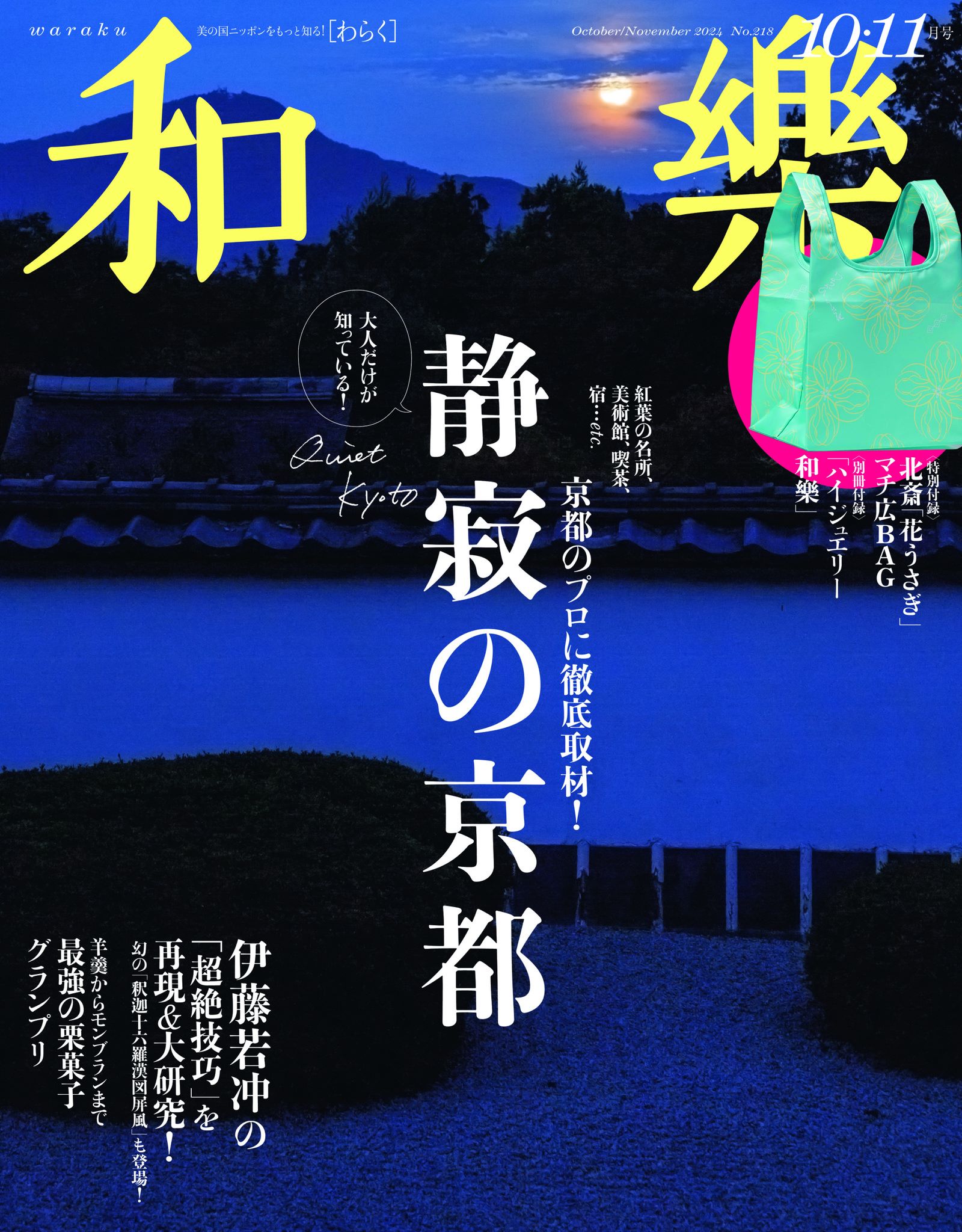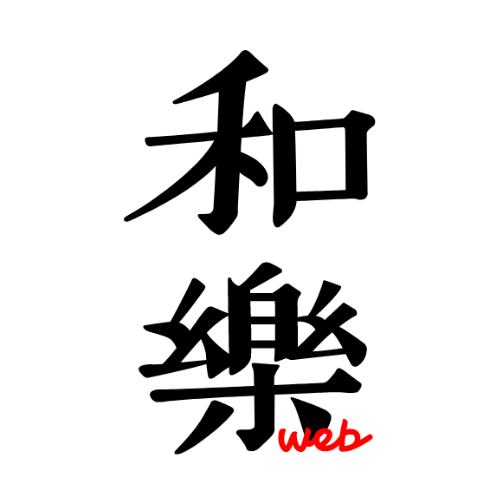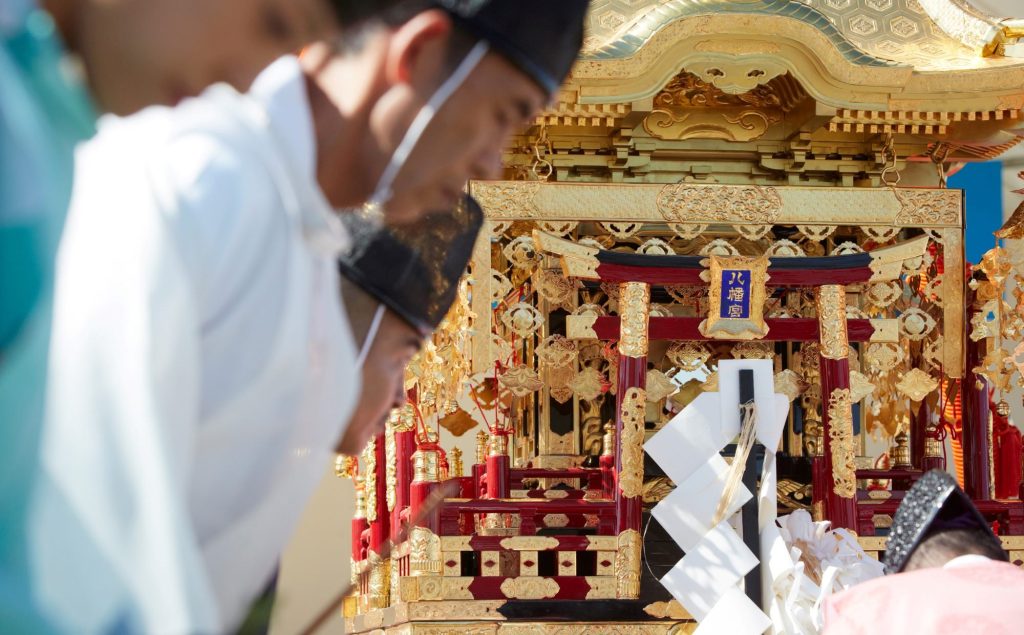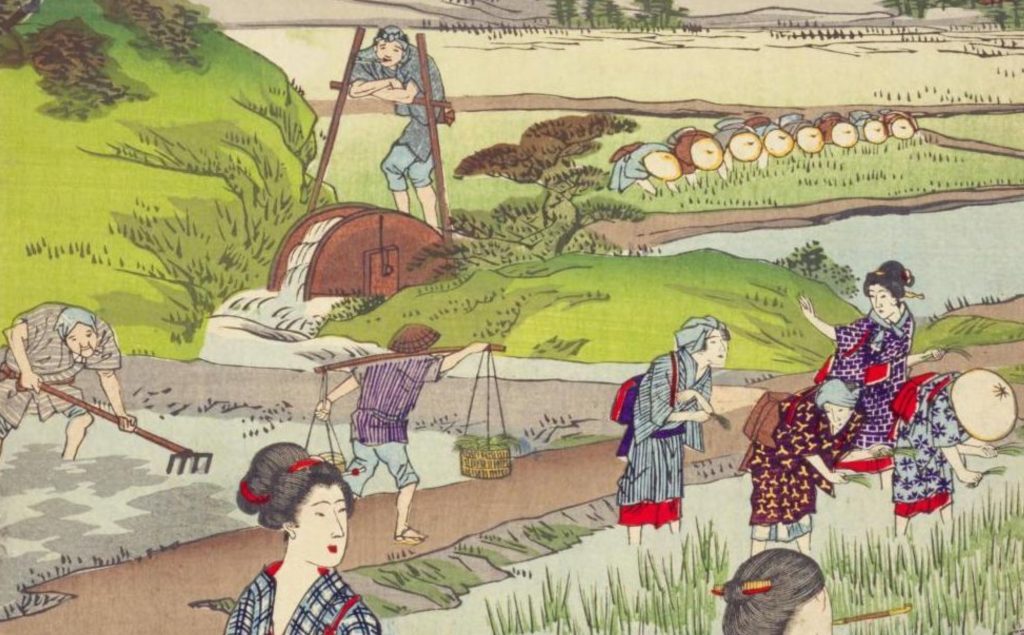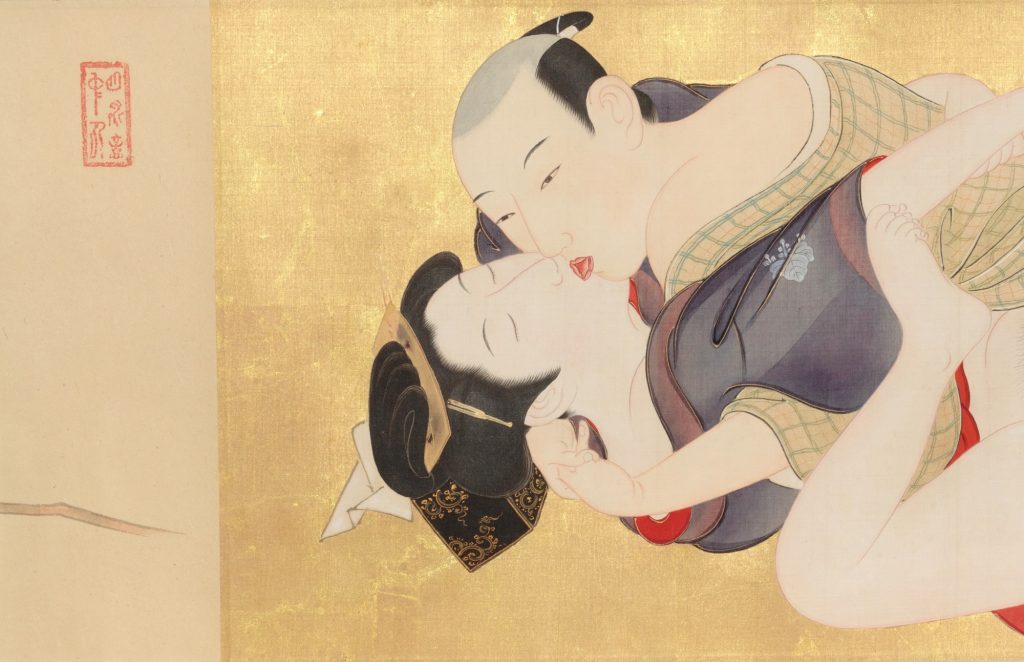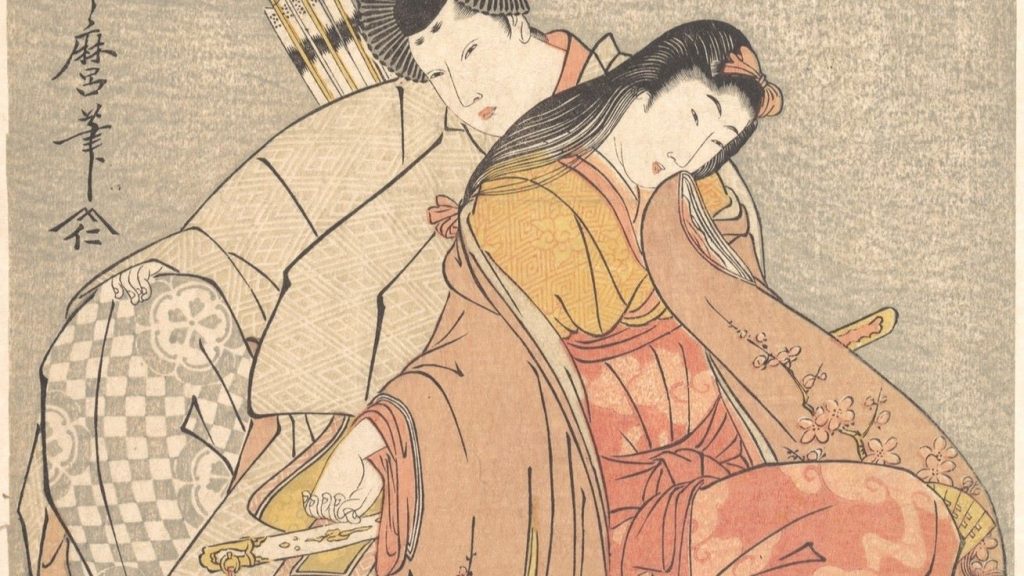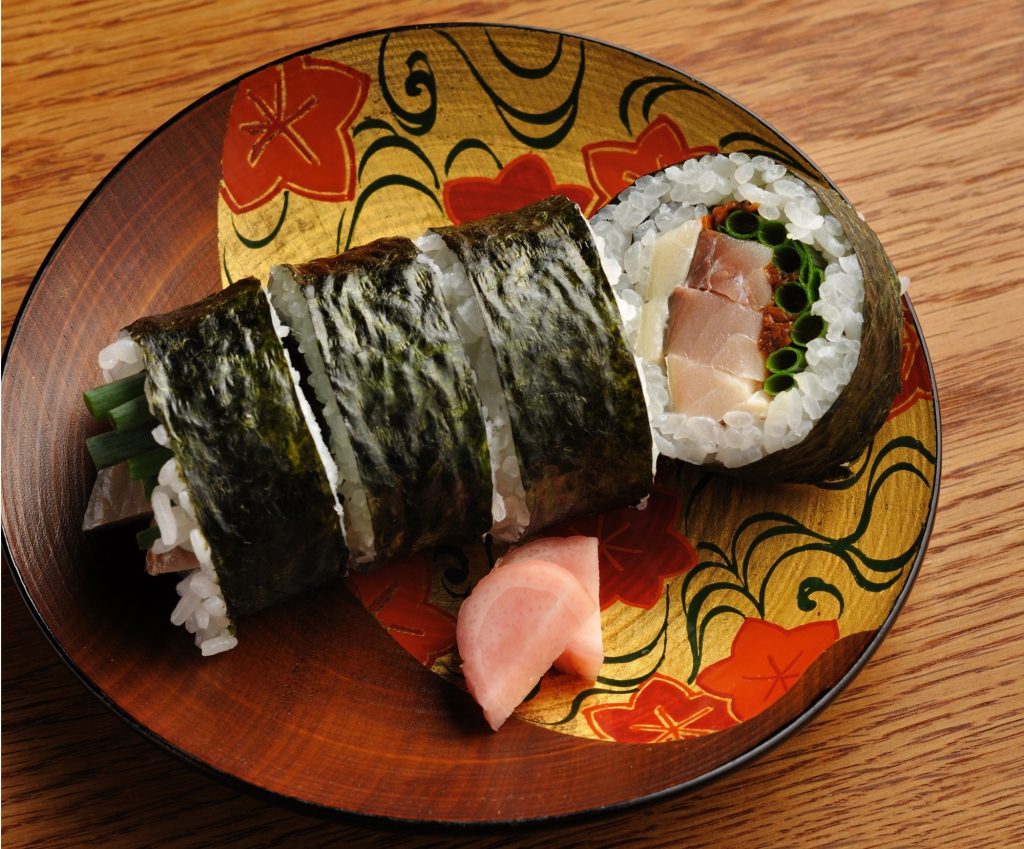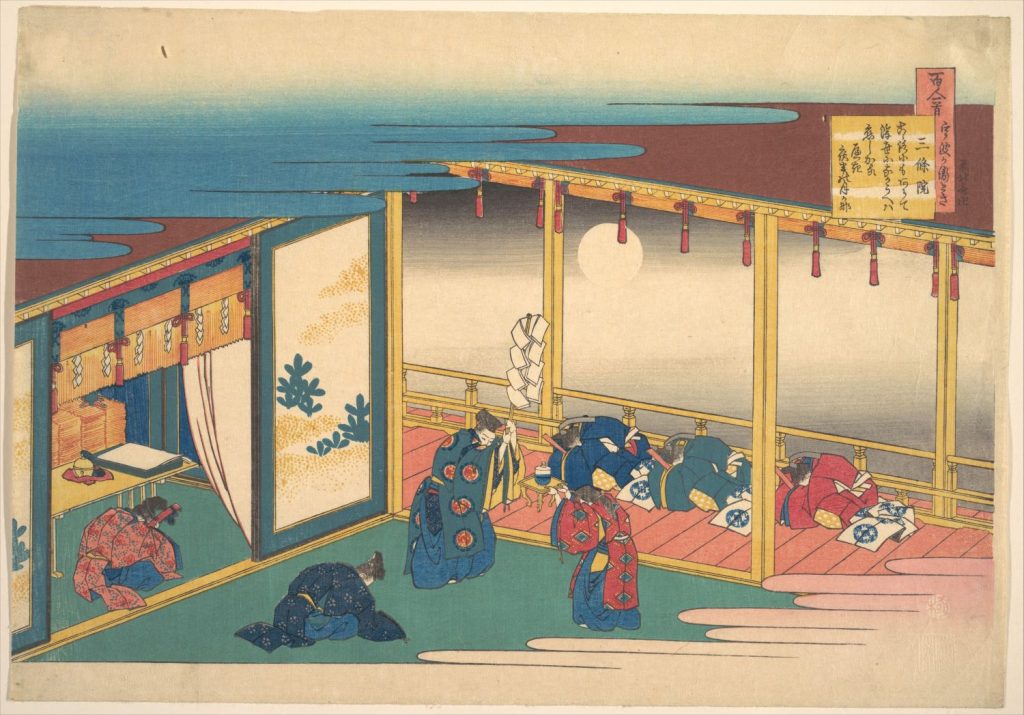There are many different flowers that bloom in spring, but in Japan, most people will probably first think of cherry blossoms.
Cherry blossoms come hand in hand with ‘hanami’, which was the biggest spring event for the common people of Edo (present-day Tokyo. The Edo people loved flowers of each season, but cherry blossom viewing in spring was special. It is said that they started preparing for the event the night before and would be out for the whole day.
Texts by Shindo Tsubara
Cherry blossom viewing spots introduced by “Edo Meisho Hanagoyomi”
“Edo Meisho Hanaygoyomi” by Okasancho, published in 1827 (Bunsei 10), is a representative guidebook for best places to see flowers in Edo (present-day Tokyo). The book classifies the beauties of nature of each season into a total of 43 items, such as bush warblers, plum blossoms, and cherry blossoms in spring, and introduces the highlights of each spot, their history and directions along with illustrations by Hasegawa Settan.
The cherry blossom viewing spots introduced in “Edo Meisho Hanagoyomi” include Ueno, Asakusa, Gotenyama, Sumida River bank, and Asukayama, many of which are still popular as cherry blossom viewing spots today.
Among them, Shin-Yoshihara is a little unique. During the Edo period, Yoshiwara Yukaku was also a popular cherry blossom viewing spot, but the cherry blossoms in Yoshiwara Yukaku held a secret that made it different from other cherry blossom viewing spots. It was that the cherry blossoms are planted only during the blooming season, for a limited time only.
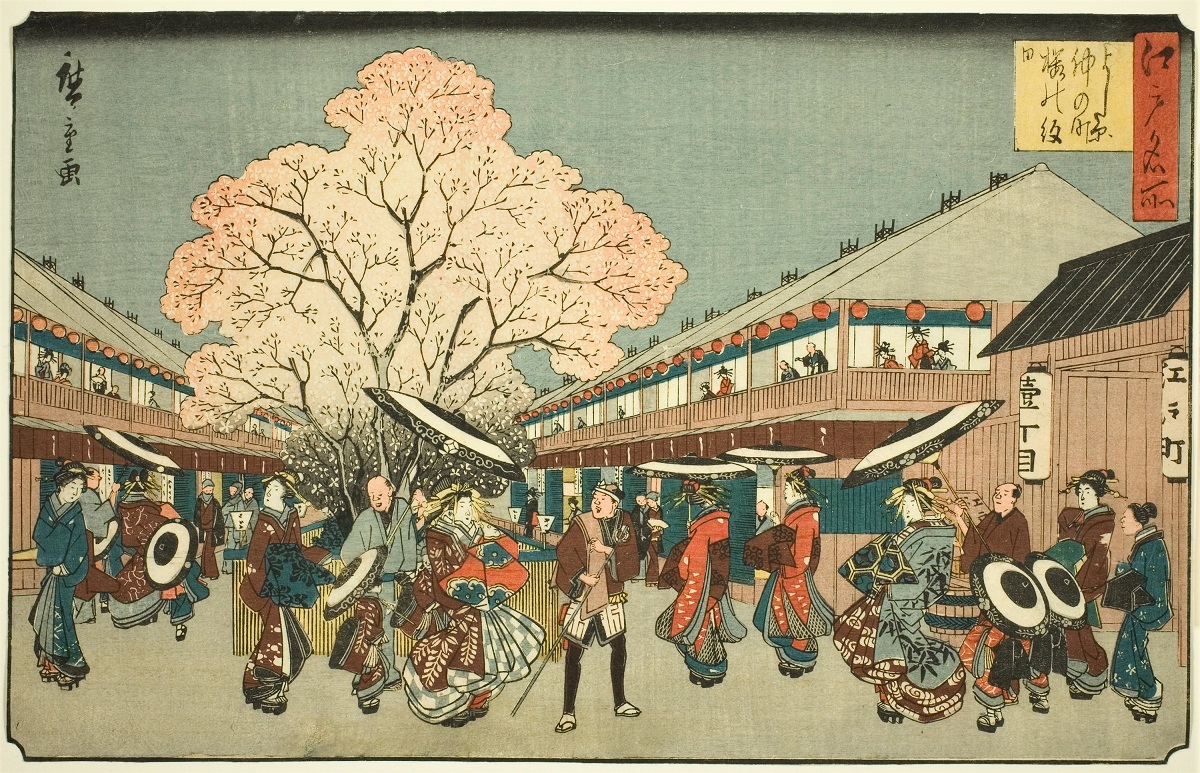
The Art Institute of Chicago
Limited time only cherry blossoms in Yoshiwara Yukaku
Yoshiwara Yukaku began operating in the Nihonbashi Fukiya-cho area in 1618 as a licensed brothel under the official permission of the shogunate. After the Great Mereki Fire of 1657, the area was relocated to the back of Sensoji Temple, where it became known as Shin-Yoshiwara.
Shin-Yoshiwara was a rectangular area about the size of two Tokyo Domes, surrounded by a blackboard fence and a moat called “Ohaguro dobu” outside the fence. There was only one entrance and exit, a large gate (Omon). The gate Kabukimon was a simple wooden gate with a shingle roof and was opened at dawn and closed at around 10pm.
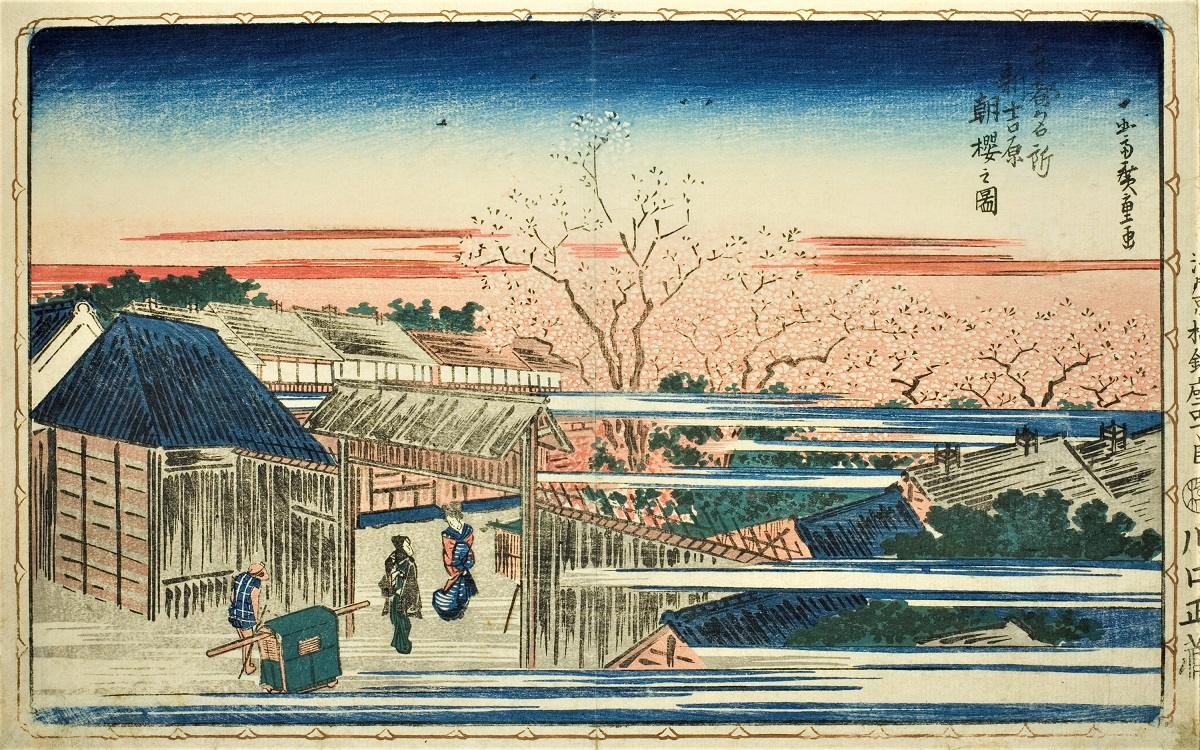
The Art Institute of Chicago
After passing through the Daimon gate, the main street called “Nakanomachi” ran through Yoshiwara from north to south for 135 ken (about 250 m). Attractions such as the spectacular “Oirandotyu” were staged on Nakanomachi, which was both the highstreet and an attraction plaza.

The Art Institute of Chicago
In “Edo Meisho Hanagoyomi,” Shin-Yoshiwara” is introduced as one of the cherry blossom viewing spots in “Harunobe,” but in fact, the cherry trees in the Yoshiwara yukaku quarters were transplanted only when the cherry trees were in bloom.
‘The first day of March every year, thousands of cherry trees are planted on Nakanomachi dori Street, excluding the left and right sides of the Daimon Gate. This is always a place of traffic. If the blossoms are late, they are sometimes planted later than the first day of the first month, depending on the temperature of the year. Even when the cherry blossoms are in leaf, people still crowd around.’
Around March 1 every year (in late March today), thousands of cherry trees were planted in Nakano-cho, the main street of the Yoshiwara yukaku quarters. Moreover, the date of planting the cherry trees seems to have been adjusted according to the temperature of the year. According to “Edo Meisho Hanagoyomi,” several thousand cherry trees were planted in Nakano cho, but it is also viewed by some that ‘several thousand was too many’, as even if three or four rows of cherry trees were densely planted, the number of trees would be around 200 at most. In any case, there is no doubt that the main street of Yoshiwara was lined with magnificent cherry trees.
Even when the cherry blossoms were in leaf, many people visited the area, indicating that it was a popular place to visit.
There is also a theory that the cherry trees were moved and planted with their roots in late February, and that the blooming of the trees was timed to coincide with the crest days of March 1 and 3 in order to attract more visitors.
The cherry trees were extravagant, costing as much as 150 ryo (approximately 6 to 9 million yen), and were transported from the mountains with their roots intact in time for the blooming season, and then pulled out when the blossoms fell. The cost seems to have been shared by the Giro, Kenban, and Hikitejaya.
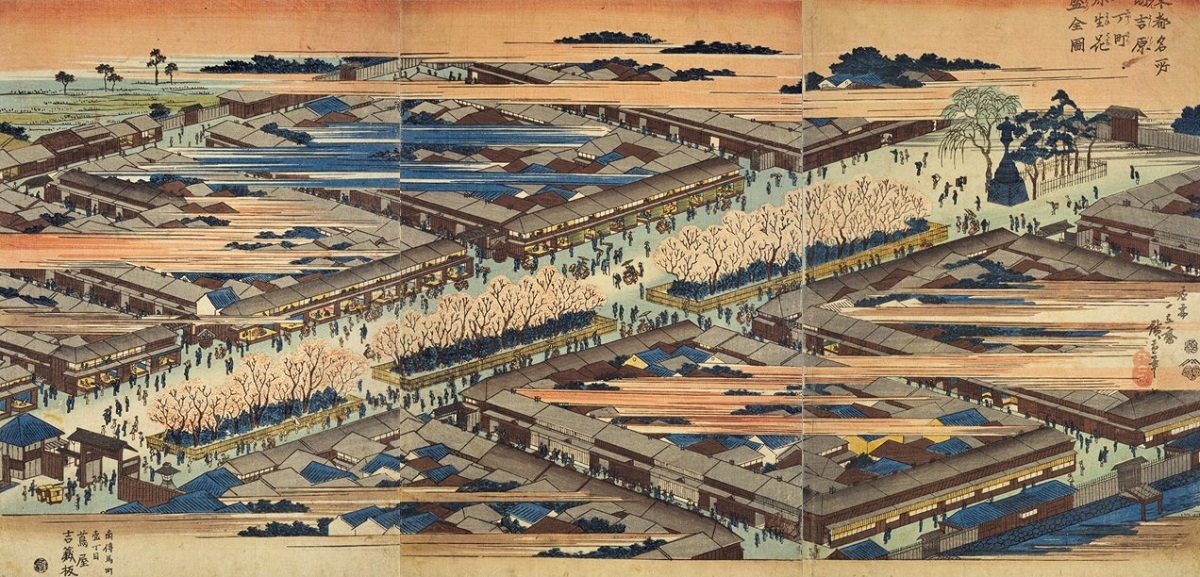
National Diet Library Digital Collection
This painting is a bird’s-eye view of the streets of Yoshiwara yukaku from above. You can see how the rows of cherry trees continued from the Daimon Gate at the lower left of the painting. Visitors to Yoshiwara Yukaku, passing through the Daimon gate, were first struck by the splendor of the cherry trees planted along the main street, Nakano cho.
The idea of purposefully planting cherry trees as a spring event to delight the visitors to Yoshiwara YuKaku is also astonishing. We do not know the details of where the cherry trees were actually brought to Yoshiwara Yugaku and how they were planted without damaging the cherry trees, but we can learn that the gardening techniques of the Edo period were very advanced.
In addition to cherry blossoms in spring, irises, chrysanthemums, and other flowers were planted in Nakano cho, the main street of the Yoshiwara yukaku , according to the season. Seasonal flowers were used to make the amusement park more spectacular!
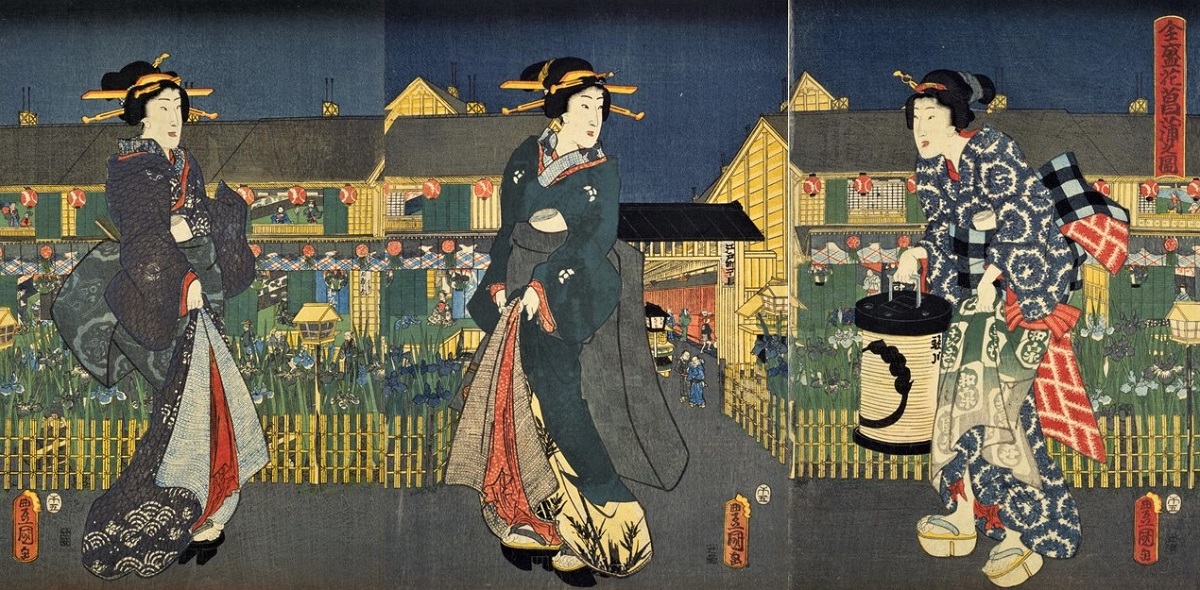
National Diet Library Digital Collections
This painting depicts a Yoshiwara geisha walking through Nakano cho, where irises have been planted.
Creating magic – Yoshiwara Yukaku’s night time cherry blossoms
Of all the annual events held in the Yoshiwara yukaku, the most spectacular and lively were the nighttime cherry blossoms in March.
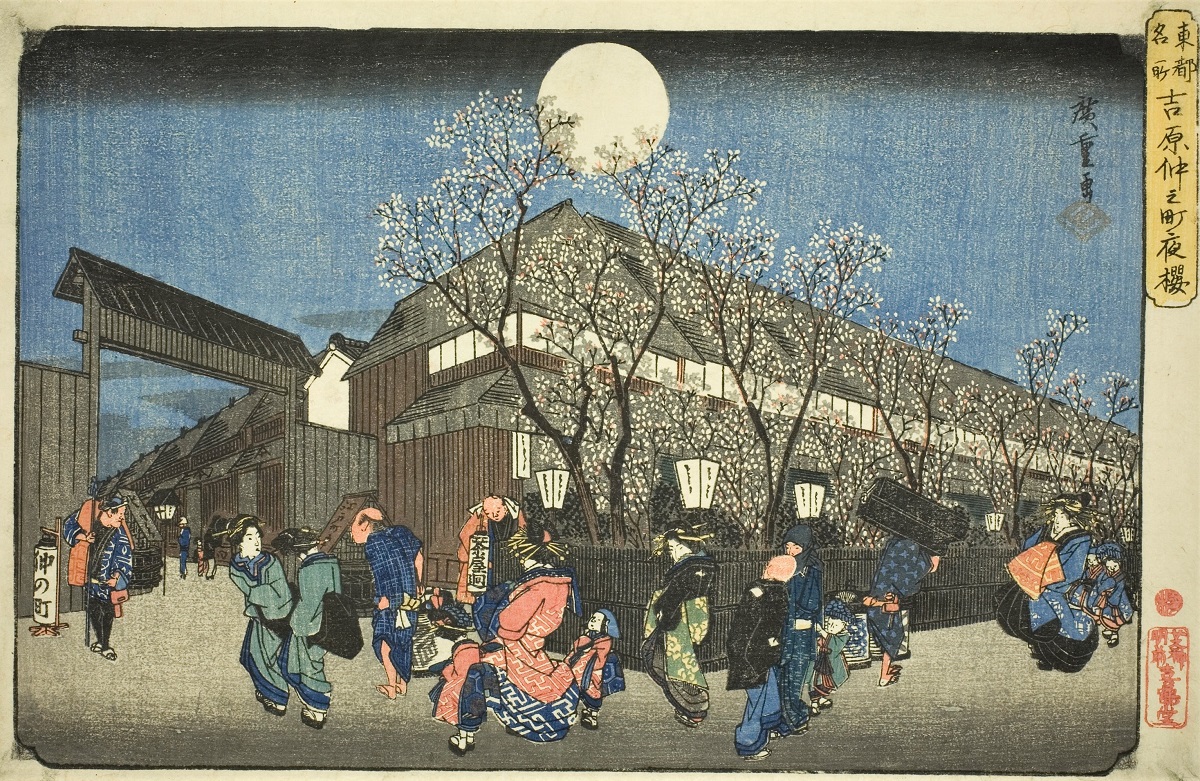
The Art Institute of Chicago
In the spring of 1741, potted cherry trees were placed under the eaves of teahouses in the Yoshiwara yukaku, which became very popular, and the following year cherry trees were planted and removed when the flowering season passed, as was customary.
In 1745, the cherry trees were planted and surrounded by a hedge of green bamboo, and at night the cherry trees were lit with lights in a bonbori so that the visitors could enjoy the cherry blossoms at night. At a time when there was no electricity and oil was precious, cherry blossom viewing at night in the amusement park Yoshiwara Yukaku must have been very magical for the people of Edo.
During this period, it is said that the Yoshiwara Yukaku was open to ordinary women, who normally could not enter the Yoshiwara Yukaku. Not only the people of Edo, but also many tourists from other provinces and warriors who came to Edo on the daimyo’s mission visited the Yoshiwara Yukaku to catch a glimpse of the reputed cherry blossoms!
Ukiyo-e reproduces cherry blossoms and courtesans in Yoshiwara yukaku and Oiran
Cherry blossoms are the color of spring in Yoshiwara Yukaku. And the oiran are as beautiful as the cherry blossoms. Against a backrop of cherry blossoms in full bloom, oiran courtesans in uchikake (women’s formal costumes with uchikake), wearing many fancy hairpins, create an extraordinary world of glamour and power.
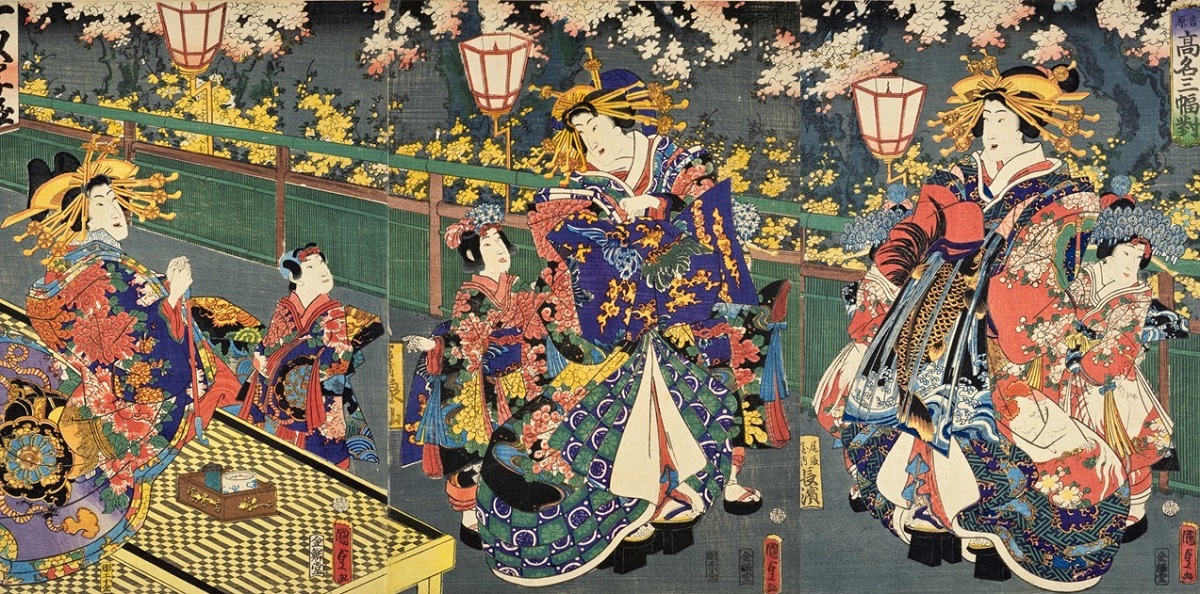
Digital Collections, National Diet Library
Three oiran (courtesans) dressed in gorgeous uchikake against a background of cherry blossoms in full bloom at night. Are they perfectly coordinated with children who accompany them?
The cherry blossoms of Yoshiwara Yukaku are now gone, but you can still enjoy the sight of the oiran’s in ukiyoe cut-outs of their glamorous appearance.
Main References
- “Edo Meisho Hanagoyomi” (Edo Meisho Zukai No. 4), Aritodo Shoten, 1927
- “Ukiyoe de Meguru Edo no Hana : Mite Tanosimu Engei Bunka”, co-authored by Hinohara Kenji and Hirano Megumi, Seibundo Shinkosha, April 2013.
- Zusetsu Ukiyoe ni Miru Edo Yoshiwara” supervised by Sato Kanato, Kawade Shobo Shinsha, May 1999
- “Kabuki no Butai de Yoshiwara no Yukaku no nakani Sakuranamiki ga Tojyo suruga, Edojidai niha Attano?”, National Diet Library Reference Cooperative Database)
▼Here are some recommended novels set in the Yoshiwara brothel
Touto to Beni (Book Sanagi Prize Winner) (Discover Bunko)

This page is translated from 吉原遊郭は桜の名所だった!非日常を演出する“期間限定”桜並木の秘密とは?




